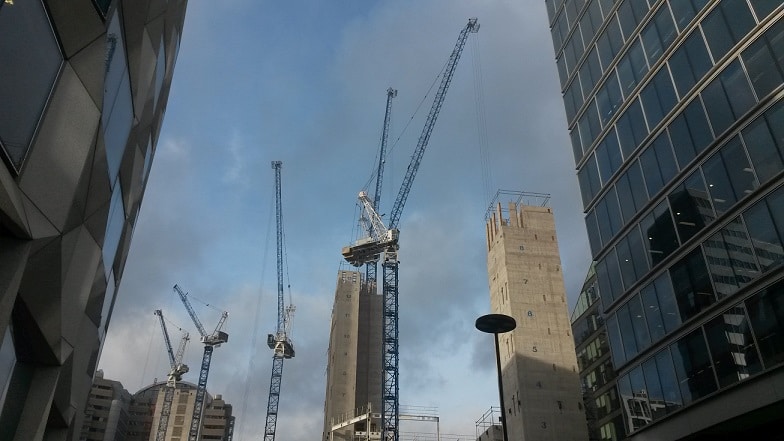The latest IHS Markit/CIPS UK Construction PMI data covering September has revealed a difficult month for the UK construction sector, as a sustained drop in new work led to the first reduction in overall business activity since August 2016. Survey respondents attributed the drop in workloads to fragile confidence and subdued risk appetite among clients, especially in the commercial building sector.
The seasonally adjusted PMI registered 48.1 in September, down from 51.1 in August and below the crucial 50.0 no-change threshold for the first time in 13 months. The latest reading signalled the fastest decline in overall construction output since July 2016.
Tim Moore, Associate Director at IHS Markit and author of the IHS Markit/CIPS Construction PMI: “A shortfall of new work to replace completed projects has started to weigh heavily on the UK construction sector. Aside from the soft patch linked to spending delays around the EU referendum, construction companies have now experienced their longest period of falling workloads since early-2013.
“Fragile client confidence and reduced tender opportunities meant that growth expectations across the UK construction sector are also among the weakest for four-and-a-half years. At the same time, cost pressures have intensified, driven by supply bottlenecks and rising prices for imported materials.
“Commercial development has been the worst performing category in recent months. Construction firms attributed falling volumes of commercial work to subdued business investment and reduced risk appetite among clients, linked to heightened economic and political uncertainty.
Duncan Brock, Director of Customer Relationships at the Chartered Institute of Procurement & Supply, said: “A dismal picture of construction emerged this month as the sector showed signs of worsening business conditions across the board. With the biggest contraction in overall activity since July 2016, and a drop in new orders, optimism was in short supply.
“Respondents pointed to obstructive economic conditions and the Brexit blight of uncertainty, freezing clients into indecision over new projects. Even housing, the stalwart of the construction sector stuttered with a dwindling performance, but civil engineering was the biggest victim falling to its weakest level for four and a half years.
“The contagion continued all along the supply chain as material shortages placed a strain on delivery times and increased commodity prices were affected by the weak pound. Despite a marginal increase in employment figures, this wasn’t enough to dispel the descending autumnal gloom where it is unclear where any major shift in momentum for the sector will come in the next few months.”
Lower volumes of construction work reflected marked falls in both commercial and civil engineering activity during September. The reduction in civil engineering work was the steepest for almost four-and-a-half years, which some firms linked to a lack of new infrastructure projects to replace completed contracts.
The latest decline in work on commercial development projects was the second-sharpest since February 2013 (exceeded only by the post-EU referendum dip seen last July). Survey respondents widely commented on a headwind from political and economic uncertainty, alongside extended lead times for budget approvals among clients.
House building was the only broad area of construction activity to register an expansion in September. However, growth momentum eased to a six-month low amid reports citing worries about less favourable market conditions ahead.
New business volumes dropped for the third month running in September, thereby suggesting a continued shortage of work to replace completed construction projects. Aside from the downturn seen around the EU referendum last year, the current period of decline is the longest recorded since early- 2013. More subdued demand led to another fall in sub-contractor usage and a relatively weak rate of job creation among construction firms during September.


